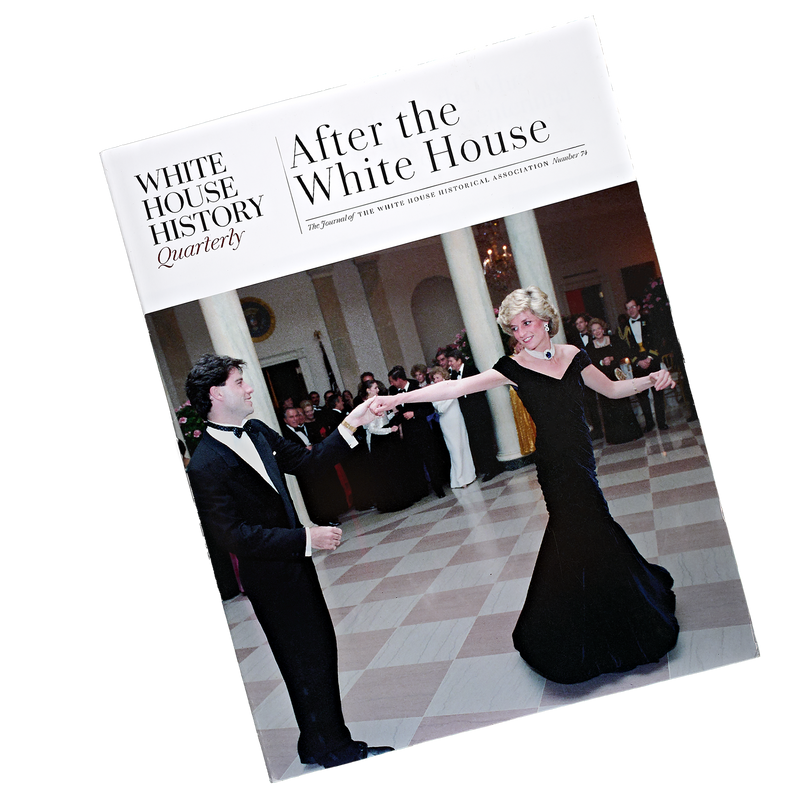




Additional Information
While the White House may be the defining moment in either a life story or in the provenance of an inanimate object, the adventure doesn't always end at 1600 Pennsylvania Avenue. With this issue we follow some interesting people and their things out the door, taking a look at what happens after the White House.
Our opening articles tracing the journeys of White House building materials and furnishings prompt some questions: Why are discarded household furnishings celebrated on their return to the White House collection? Why would a bent nail from a White House wall be a collectible treasure? And why has a velvet evening gown worn to a single White House dinner been sought after, auctioned, preserved, and exhibited? The words of the late historian William Seale offer a fitting answer. He once said “the old stones of which this house is made are saturated . . . by history.” As these pages reveal, no matter whether made of silver, velvet, or brick, the objects that set the stage for the American presidency will forever be primarily White House objects, attracting attention, desire, and even reverence for the history they hold.
For human White House residents, as well as the inanimate objects, there is an “after the White House,” and several of our contributors share the stories.
Historian Rebecca Boggs Roberts explains that for President and Mrs. Woodrow Wilson the first step was deciding where to live. President and Mrs. Dwight D. Eisenhower, in contrast, knew exactly where to head—their Gettysburg farmhouse, a long-awaited sanctuary for their retirement; Colleen Shogan tells the story. For other former presidents, “After the White House” did not mean retirement. Amanda Larson describes how President Jimmy Carter devoted his post-presidential years to humanitarian causes and author Claude Marx reveals that President William Howard Taft was destined to serve in the U.S. Supreme Court. Marx contributes our quarterly presidential site article on the U.S. Supreme Court Building, a memorial to Taft.


